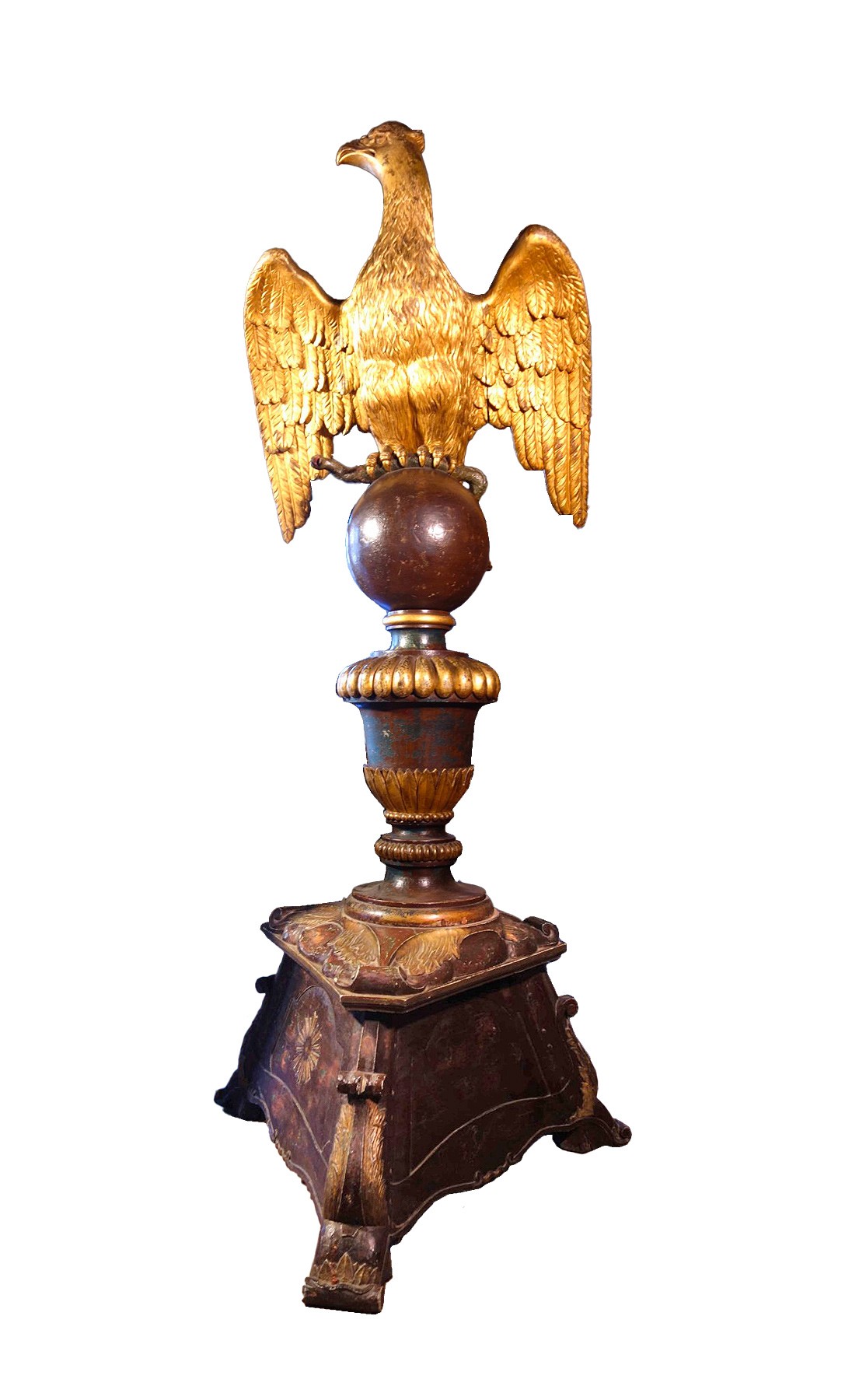Why Do Lecterns Have Eagles on Them: Unveiling the Symbolism
Lecterns often have eagles on them due to their symbolic significance. Eagles represent strength, authority, and vision.
These qualities align with the purpose of a lectern in a place of worship or public speaking. The use of eagle imagery on lecterns dates back centuries. In churches, the eagle symbolizes the spread of the Gospel and divine inspiration.
The bird’s strength and ability to soar high reflect the power of the words spoken from the lectern. This tradition has carried into modern times, adding a sense of gravitas and history to these pieces of furniture. Understanding why eagles adorn lecterns can deepen our appreciation for their design and the messages delivered from them. So, let’s explore this fascinating tradition further.
Historical Origins
The eagle on a lectern stands as a symbol of wisdom and vision. This majestic bird has a long history of association with power and authority. Understanding why eagles are on lecterns requires a look into the past.
Ancient Symbols
In ancient times, the eagle symbolized strength and freedom. The Romans saw eagles as messengers of the gods. The bird represented the connection between heaven and earth. This belief made the eagle a powerful symbol in many cultures.
Medieval Influence
During the medieval period, the church adopted the eagle as a symbol. The bird’s ability to soar high made it a fitting representation of spiritual enlightenment. Lecterns often featured eagles to remind readers of the divine message they shared. The use of the eagle also linked the church to the power and authority of ancient Rome.
Many medieval manuscripts and artworks show eagles on lecterns. The bird’s presence in these works reinforced its importance. The eagle became a standard design for lecterns in many churches.

Credit: www.anticstore.art
Religious Significance
The presence of eagles on lecterns is not just decorative. It holds deep religious meaning. Eagles symbolize strength, vision, and divine inspiration. Their use is especially significant in Christian traditions.
Christian Iconography
In Christian iconography, the eagle is a powerful symbol. It represents the ability to soar high and see clearly. This is akin to the spiritual vision and insight that religious teachings aim to provide. The eagle’s presence on lecterns serves as a reminder of these lofty goals.
Biblical References
The Bible contains multiple references to eagles. These references highlight their importance and symbolic value. For instance, Isaiah 40:31 states, “They shall mount up with wings as eagles.” This verse suggests strength and renewal, qualities essential for spiritual leaders and their teachings.
| Reference | Meaning |
|---|---|
| Isaiah 40:31 | Strength and renewal |
| Exodus 19:4 | Divine protection |
| Revelation 4:7 | Vision and insight |
These biblical references strengthen the choice of the eagle as a symbol on lecterns. They reflect the spiritual qualities that religious teachings aim to impart.
Cultural Impact
The cultural impact of eagles on lecterns is profound. Eagles have been used for centuries in various forms of art and literature. They symbolize strength, vision, and authority. These qualities make them ideal for lecterns, which are platforms for delivering important messages. The presence of eagles on lecterns has influenced culture in many ways.
Literary Depictions
Many literary works feature eagles as symbols. In ancient myths, eagles often represent gods. They convey messages from the divine. Authors use eagles to symbolize power and wisdom. For example, in J.R.R. Tolkien’s books, eagles are noble creatures. They save heroes and deliver critical messages.
In poetry, eagles are often used to depict freedom. They soar high, unrestrained by the world below. This imagery resonates with readers. It adds a layer of meaning to the text.
Artistic Representations
Eagles appear frequently in artistic representations. They are prominent in paintings, sculptures, and other forms of visual art. Artists use eagles to convey strength and dominance. In religious art, eagles are often depicted alongside saints and prophets. This highlights their role as divine messengers.
The design of lecterns often includes eagles. This is not just for aesthetic reasons. The eagle’s presence on a lectern signifies the importance of the spoken word. It draws attention and commands respect.

Credit: m.facebook.com
Modern Interpretations
Modern interpretations of lecterns with eagles reflect a blend of tradition and contemporary design. While the historical significance remains, today’s designs often incorporate new materials and styles. This blend creates a unique aesthetic that appeals to modern sensibilities.
Contemporary Design
Contemporary lectern designs often use materials like metal, glass, and wood. These materials give a sleek and modern look. The eagle motif is sometimes stylized to fit these designs. It may be abstract or simplified, yet still recognizable.
This modern approach makes lecterns versatile. They can match various settings, from corporate events to educational environments. The updated design ensures they remain relevant and functional.
Symbolism In Today’s Context
The eagle on lecterns still symbolizes strength and vision. In today’s context, it also represents leadership and clarity. These qualities are important in any setting where a lectern is used.
The symbolism resonates with audiences. It adds a layer of meaning to speeches and presentations. The eagle stands as a reminder of these enduring values.

Credit: en.wikipedia.org
Frequently Asked Questions
What Is The Significance Of Eagles On Lecterns?
Eagles symbolize strength, vision, and power. They elevate the importance of the scripture reading.
Where Did The Tradition Of Eagles On Lecterns Start?
The tradition began in medieval Europe. Eagles were seen as messengers of gods.
Are All Lecterns Designed With Eagles?
No, not all lecterns have eagles. It’s more common in traditional and historical churches.
Conclusion
Eagles on lecterns symbolize strength and vision. These birds represent leadership and freedom. They inspire speakers to deliver powerful messages. The rich history of eagles on lecterns continues today. Their presence adds elegance and tradition to any setting. Understanding this tradition enhances our appreciation.
Next time you see an eagle, remember its significance. Embrace the inspiration and wisdom it brings.


